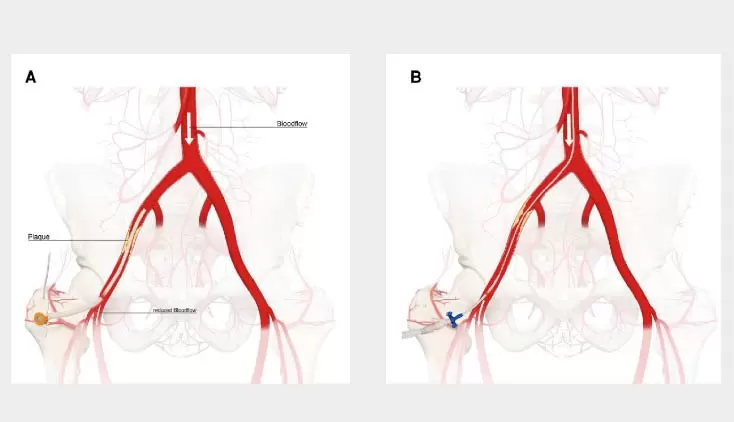Clinical Research & Data, Unloading, Protected PCI
STEMI-DTU™ RCT and the Disruptive Concept of Delayed Reperfusion
“You’ve got to change your mentality and think about the long-term effects for your patients, not just that immediate gratification of epicardial revascularization,” Navin Kapur, MD, emphasizes in this presentation on the STEMI DTU randomized controlled trial (RCT). Dr. Kapur gave this presentation at a Coronary Artery and Myocardial Protected PCI (CAMP PCI) educational event on cardiogenic shock and high-risk PCI in June 2022.
Dr. Kapur asks the question, how can you intervene on the coronary arteries and achieve myocardial protection that leads to myocardial recovery? To answer this, he dives into the science of myocardial metabolism, explaining, “revascularization has the opportunity to now start to stabilize the metabolism of the heart, and that leads to long-term myocardial recovery.”
Dr. Kapur presents the case of a vibrant, active, 70-year-old patient with a large anterior STEMI. The patient consented for the STEMI DTU RCT and was randomized to the immediate reperfusion control arm. Within a few days, the patient felt great, and echo showed LVEF>50%; yet an MRI revealed a massive zone of myocardial injury. Dr. Kapur highlights that such situations can lead clinicians to think, “I didn’t do enough.”
Instead of thinking of ventricular unloading as a platform to assist in high-risk PCI, Kapur states, “Ventricular unloading is the therapy. And what happens when you start to unload, and you start to reduce anything that increases myocardial oxygen consumption, is you start to change the biology and the physiology of the heart. And that gives you the opportunity to now achieve myocardial salvage.”
Dr. Kapur points to key findings from interventional cardiology pioneers Drs. Bart Meyns and Richard Smalling from nearly 20 years ago as well as more recent research supporting the concept that unloading provided by mechanical pre-conditioning with acute circulatory support before reperfusion changes the signaling platform throughout the heart, limiting infarct size in AMI. All of this research has led to the concept of 30 minutes of unloading before reperfusion to optimize the kinetics of conditioning. “You need to give the pump a little bit of time to optimize the heart, so when you open up the artery, you can reduce that myocardial damage,” Kapur explains.
Dr. Kapur also highlights microvascular obstruction (MVO) and infarct size as critical markers of patient outcomes, and he discusses the idea of ischemic time. “The longer your ischemic time, the more injury you get. But on the platform of unloading, time stops. You no longer are ischemic. And that is the really radical, disruptive concept!”
Dr. Kapur presents a per-protocol analysis from the STEMI-DTU pilot study, comparing unloading with immediate reperfusion versus unloading with delayed reperfusion. Results showed a trend of reduced infarct size and flat, low MVO across all infarct sizes with delayed reperfusion. Looking at the 5.6% vs 1.3% incidence of MVO at ST elevation greater than 8 in the immediate and delayed reperfusion groups, respectively, Dr. Kapur emphasizes, "Both are unloaded. That tells you that the delay is the difference… one arm got 30 minutes of conditioning and that’s the real take-home message here.”
He concludes with information about the STEMI-DTU RCT, which is now enrolling patients in the United States and Europe. It compares primary reperfusion— “what we do every day in the cath lab”—to primary unloading, which is unloading with 30 minutes of conditioning before reperfusion. Kapur tells clinicians that it is important to think about these concepts when unloading patients to understand why you are doing it. “If you can understand the rationale, it’s going to change the way you operate.”
NPS-2937


